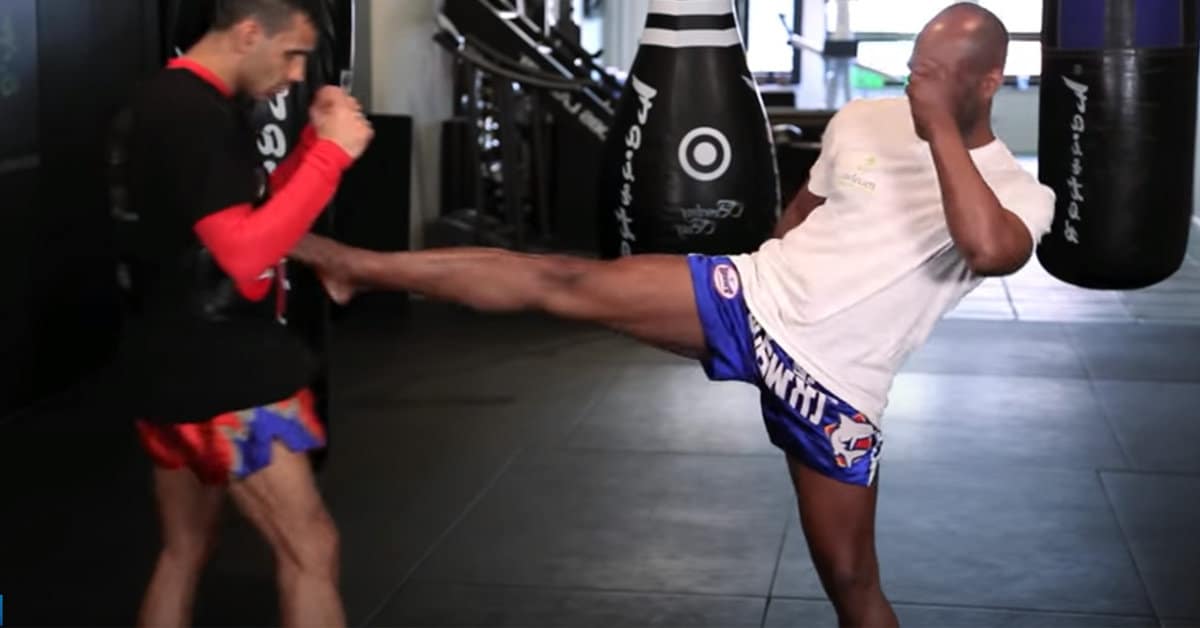Martial arts and fighting, in general, is very messy, very unpredictable, and also complicated. Not the techniques, but the actual fighting. With the invention of the first martial arts, and even before that, people have been testing their own martial arts and combat prowess by fighting against one another in friendly fights. However friendly these fights were, people used movements that aren’t fit for the given battle, even because they are too dangerous or just irrelevant in the testing of a given martial art. This is the same in Taekwondo. There are some rules which are in place for safety, and some which prohibit some movements due to irrelevance. In today’s article, I will answer the question: can you push in Taekwondo?
Most Taekwondo rulesets prohibit or limit the use of pushing in a competitive Taekwondo fight, both because of its irrelevance to gauging Taekwondo skills, and because it is dangerous.
A push doesn’t seem too dangerous in a fight, right? We will dive into the reason why Taekwondo doesn’t usually allow pushing and information on TKD rules in general. If you want to take up TKD and might even have it in your crosshairs to become a competitive Taekwondo martial artist, this article is for you. Read on if you are interested!
General Rules of Taekwondo
Original Taekwondo, the one created in the 1940-s and 1950-s by Korean military figures and martial artists, does not have anything that would be considered rules. The only rules were the art itself, that you have to try to perfect it, but the rules of fighting weren’t dictated as they are with fighting competitions, tournaments, and championships.
Modern rules of any sports, especially martial arts, have to be extensive and specific since a competition or tournament with high stakes and prizes cannot allow itself to be sloppy and subjective around the final analysis. This is why rules are made in a hierarchical fashion in order to create an all-encompassing system, which then can provide a solid, fool-proof system of scoring a match.
Taekwondo rules are based around a point-scoring system since in TKD tournaments, knockouts are very rare, thus there has to be another way to rate the performance of each fighter. A point is given to the fighter who lands a legal strike to the body of the opponent, and two points are given if this strike is a legal kick to the face. Another point is also granted for the competitor who manages to land a knockdown.
Points are also deducted from fighters upon violation of the rules. Point deductions are carried out either by deducting a point from the competitor who violated the rules or by adding a point to the opponent. This happens when a fighter lands an illegal strike or does an illegal movement.
One of the most fundamental rules in Taekwondo concerns strikes to the face. Punches to the face are completely prohibited. It is a Gam-jeom, which is the most serious Taekwondo offense, and results in the deduction of one whole point. Similar violations are things like holding your opponent, feigning without carrying out a strike with the same motion, etc.
Why Is Pushing Illegal in Taekwondo?
In Taekwondo, pushing is generally included in the list of offenses and is considered to be an illegal move. There are two reasons for this, one has to do with general safety, while the other has to do with the way these TKD tournaments were conceived at the beginning.
Safety is a really important part of TKD rules, which is why protective vests and helmets are amongst the mandatory equipment. Taekwondo is heavily based on kicking, with a majority of its techniques not even using the arm for anything other than generating momentum for a kick. This is the reason why pushing is looked upon as a greater danger in this form of fighting than in others. When kicking, at least one leg of the fighter is in the air, and thus is very easy to knock an opponent down, and also extremely dangerous.
Another important aspect is that TKD tournaments are not brawling tournaments. People don’t compete in Taekwondo competitions to be able to do pub fights but in order to measure their knowledge of Taekwondo to their opponent’s. If pushing were legal, it would be used way too often, since it is one of the most effective counterattacks to high kicks. This would mean that there would be less space for the practitioners to actually showcase their TKD skills, and more to showcase general fighting capability, which shouldn’t be the goal of any TKD competition.
Different Rules in Different Tournaments
So, as clarified earlier, pushing is generally viewed as an offense in all of TKD but doesn’t have the same rules and regulations in all associations and organizations. Several different organizations have different rules on pushing, which sometimes results in misunderstanding and complaints since the differences between these rules can be quite subtle.
One of the most basic versions of the rule is the total prohibition of pushing. This means that any intentional motion which is not aimed at striking the opponent, but at shoving or pushing them, will result in a point deduction and is considered a Gam-jeom. These organizations consider pushing to be both unnecessary and dangerous.
The other, frequent variant of this rule is that pushing is allowed, except when the opponent is attacking. This means that pushing or shoving an opponent who has begun to perform a strike will result in a point deduction. This stems from the idea that pushing may be a great way to test the stability of the fighters, so it isn’t unnecessary, but performing a push when the opponent is attacking is dangerous, so that isn’t allowed.
Some minor changes made to the set of rules have to do with pushing while clinching, doing so to the side, pushing while blocking, etc. We won’t go into these more deeply in this article, since these minor adjustments only rely on the organization’s subjective experience of a fight. Usually, the previously mentioned two variations are the rules taken into account.

